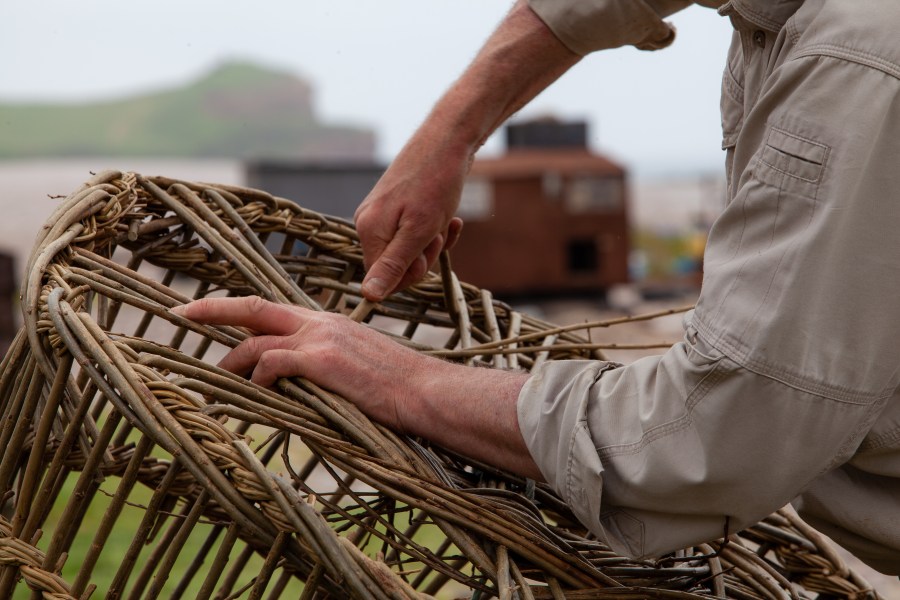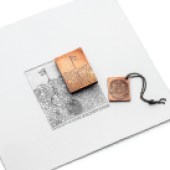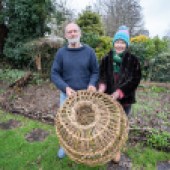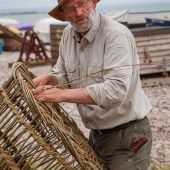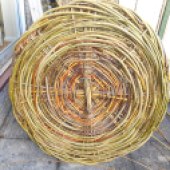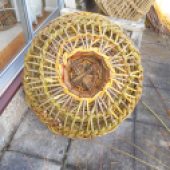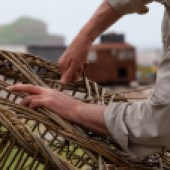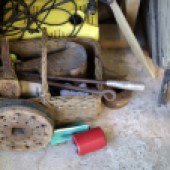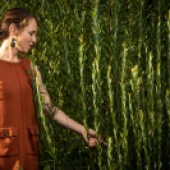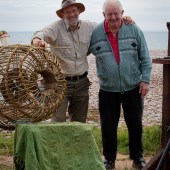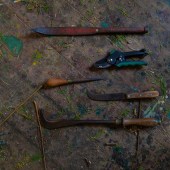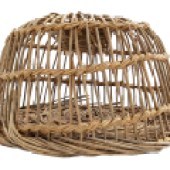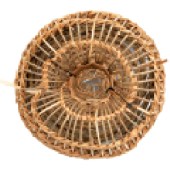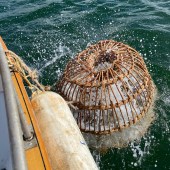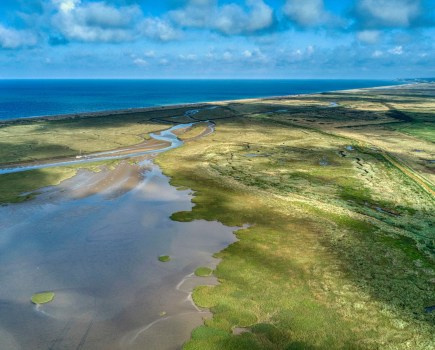On Britain’s south western shores, a group of artisans believe their traditional crafts in ancient fishing could inspire the sustainable, plastic-free solution we desperately need, reveals RICHARD COLLETT.
Dave French learned to craft willow into lobster and crab pots on Devon’s south coast in the 1960s. Five generations of his family had fished off the pebble beaches of Budleigh Salterton, and French spent long winters watching as traditional ink-well-shaped ‘withy pots’ were prepared in time for the fishing season’s spring start.
Crafted for centuries by the calloused hands of seasoned fishers, withy pots are woven from natural materials like willow, hazel and tamarisk. The pots would biodegrade if lost at sea, while the number of lobsters and crabs caught was limited by the number of withy pots that could be fashioned by fishing families.
But the sudden introduction of mass-produced, long-lasting plastic fishing gear in the 1960s ensured that withy pots began to disappear, and the skills and knowledge needed to craft them were almost lost as older fishermen retired or passed away.
Realising that a centuries-old fishing tradition was in danger of dying out completely, in the 2000s, Dave began reviving the craft he’d seen abandoned. The United Kingdom’s Heritage Crafts Association (heritagecrafts.org.uk/withy-pot-making/) lists withy pot-making as ‘critically endangered’, but Dave is one of a number of artisans and fishers who’ve helped save the traditional craft from disappearing forever. Now, the plastic-free qualities of withy pots could inspire the sustainable fishing solution the industry desperately needs.
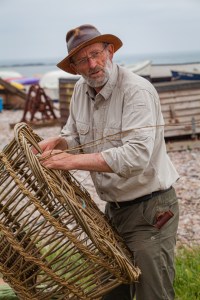
“I always used to ask: why not bring the old pots back?”, Dave says from his home in Plympton, Devon, where withy pots and bundles of old willow sticks are stacked high in his garage. “But my Uncle Gerald would tell me to leave it in the past. ‘They’re too difficult to make’, he would say. And he’d show me his hands, cracked and blistered from making so many pots throughout his life.”
Withy pot fishing was a fixture in Britain’s south west for centuries. Evidence of their use first appears in Elizabethan-era oil paintings, but Dave explains they’ve likely been crafted for as long as people have fished from boats. The skills needed to make them were passed down from one generation to the next, and their preparation in winter – when the storm-ravaged seas were too dangerous to fish – was a family affair, with everyone pitching in to craft enough pots for the approaching season.
“These things were never written down,” says Dave, as he explains why very little evidence of the craft survived. “The pots go into one of the most hostile environments in the world, they just disappear if they’re lost and they were burnt or thrown away at the end of the season.”
Fishers eagerly adopted new plastic pots when they became readily available, but as the commercial viability of small-scale fishing communities also waned, Dave’s family were forced to abandon fishing in Budleigh Salterton.
He kept his love for crab and lobster potting kindled by working for decades part-time on a friend’s ship out of Dartmouth, and as he saw the old ways of fishing he’d grown up with vanishing, Dave began making withy pots in his garage and showcasing them to great interest at craft fairs and festivals along the coast.
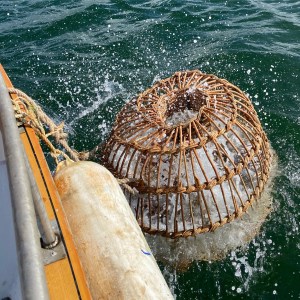
After sourcing fresh ‘withy’ (willow sticks) from a grove in Somerset, Dave starts by placing 12 ‘withies’ around a ‘pot stand’ and weaving a ‘pot mouth’ (an opening large enough for lobsters to crawl in or out of) at the top. He places more withies between the original 12 (giving a total of 36), then starts on the thick horizontal ‘ringing’ which binds the pot together with yet more withies.
Once the top of the pot is complete, he removes it from the pot stand, turns it upside down and starts the laborious task of bending the withies inwards and weaving them with more willow to create a sturdy bottom with a thick rim that can survive on the seabed.
Withy pots were shaped by the needs of the fishers and the whims of the ocean. Dave weaves his in a distinctive ‘East Devon’ style that’s flat and wide, designed for Budleigh Salterton’s pebble sea beds. In Cornwall, pots are prepared on The Lizard with extra bindings of willow forming a heavy guard named a ‘chim’. This protects the pot when strong Atlantic currents knock it into the hard granite seafloor. “You even had family differences,” adds Dave. “So there would be no arguments if you found a lost pot at sea.”
Dave makes one to two pots per day, but it’s tough work. The willow needs to be bent and forced into shape using skills and muscle memory only gained after years of weaving and countless long days spent hunched over willow frames. Eventually – like his Uncle Gerald’s before him – Dave says his hands will be too worn from the work to continue.
“I’ve become quite fanatical about withy pots,” says Sarah Ready, who goes by the social media moniker The Girly Fisherman. “They’re beautiful to pot with, and I think we can use our heritage to see where fishing can go next.”
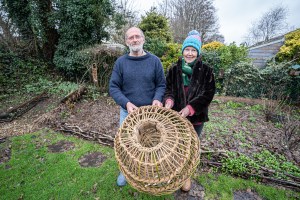
Sarah has spent much of her life fishing in Brixham, Devon, where her other work as a lawyer has made her all too aware of the problems facing the fishing industry. She firmly believes Britain’s maritime heritage can provide unique solutions to overfishing and plastic pollution.
Sarah made her first withy pot in 2016 with the help of YouTube videos, but now she’s secured funding from the Queen Elizabeth Scholarship Trust (QEST) that’s financially supporting her new role as Dave’s apprentice.
She’s learning how to make working withy pots which she attaches to cork floats and weighs down with rocks and pebbles at fishing grounds near Brixham. She uses off-cuts sourced from a local seafood restaurant as bait, where she then sells any crabs or lobsters that wander into her pots.
“There are people who pay a lot more for lobster or crab that’s been sustainably sourced,” reveals Sarah, as she explains the viability of her plastic-free withy pot business model. “We’re getting more calls from small-scale fishermen interested in sustainability, who also want to learn about moving away from the plastic pots.”
Interest in withy pots – not only as important pieces of heritage but as a potential plastic-free fishing solution – is increasing. Dave recently made 25 withy pots for Bangor University, where a plastic-free fishing trial is seeing positive results off the Welsh coast. Sarah believes hand-made withy pots are an excellent option for young fishers looking to break into an expensive industry, given they can buy a small boat, make the pots themselves and sell sustainably caught crab and lobster for a comparatively high price.
However, there’s a reason why Dave estimates that only five or so fishermen in the south west can make working pots that survive in the water; not just decorative pots that are sold to tourists in fishing villages. They’re labour-intensive, the quality of willow can be unpredictable and they have to be replaced after one or two seasons. “And in the case of these pots,” adds Dave. “You need to know how to fish with them, not just make them.”
But on the Isles of Scilly, fisherman Jof Hicks (instagram.com/jof.hicks/?hl=en) might have a solution. He’s been successfully experimenting with a commercial fishing setup that includes withy pots prepared from homegrown tamarisk and an oar and wind-powered boat made from salvaged parts. He’s also working on what he calls a ‘hybrid pot’, inspired by withy pots, but made from repurposed wooden slats that can be easily mass-produced using sustainable materials.
Dave and Sarah are overjoyed that a heritage confined to the pages of maritime history has not only been saved but could inspire sustainable fishing practices going forward. As Dave concludes says, though: “I wish this had all happened 20 years ago, but back then, environmental issues just weren’t a concern in the way they are now.”
traditionallobsterpots.co.uk/; instagram.com/girlyfisherman/?hl=en
POTS INTO ‘JEWELLWITHY’
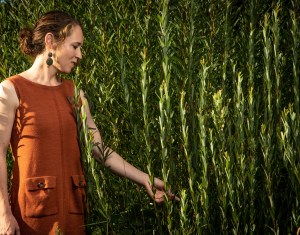
Cornwall-based artist Anna Pope gained a deep respect for the heritage and eco-friendly design of withy pots after marrying into an old Cornish fishing family. Deciding it was necessary to document the different regional styles of withy pots before they disappeared forever, she organised an extensive documentation project with the help of Cornwall College that inspired her to create a range of elegant withy pot-inspired jewellery which she named ‘jewellwithy’.
“I want to connect younger generations to withy pots,” explains Anna. “To help them carry on making pots so they can carry on the stories of the fishermen before them. The pots don’t live on, but the skills and stories can, and the jewellery is a way for me to connect and explain the story of these withy pots. It’s a way to explain the connections with the plants, land, sea and seasons associated with withy pot-making.”

